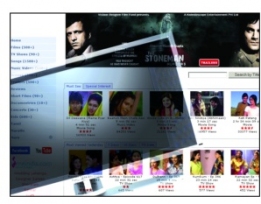
In view of the various business opportunities that such growth offers, Rajshri Productions added to its leased line-based communications infrastructure. The underlying idea was to streamline communications and help the entertainment major reach out to a wider audience. tele.net takes a look at its telecommunications infrastructure deployment and upgradation...
Background
Established in 1947, the Rajshri Group has produced 51 Hindi films till date. It also owns India's largest and most comprehensive film distribution network with branch offices all over India. It has distributed over 1,000 films so far.
Rajshri Media, the group's web and mobile studio which was set up in 2006, has the mandate to create, aggregate and distribute premium Indian entertainment content across new media platforms and digital entertainment devices.
Legacy systems
In its early days, the company's IT and telecom infrastructure comprised 1 Mbps leased lines and simple telephone lines.Apart from this, it also had internet connectivity. In short, the company's communications infrastructure was extremely basic with specific, clear-cut functions.There was no attempt to innovate or upgrade, as the company operated on a small scale at the time.
However, as the scale of the business grew, the entertainment major realised that its IT and telecom infrastructure was not conducive to business continuity. Operations were "restricted" to an extent as there was no common platform where information and data could be shared.
The shift
The company, therefore, took rapid steps to upgrade its infrastructure. It had two goals – to beat the competition and to ensure business continuity.
The increasing use of bandwidth applications and voice over internet protocol (VOIP) drove the need for inter-branch connectivity. The company upgraded and revamped its wide area network infrastructure. While earlier it primarily used leased lines, the company also started using international private leased circuits and ISDN.Earlier, the leased lines were of 1 Mbps capacity, which was insufficient to meet the company's connectivity requirements.Today, it has a 10 Mbps leased line set-up, along with a 4 Mbps leased line infrastructure as back-up.
ISDN has helped the company remain in constant touch with its many branch offices. The management now enjoys higher bandwidth speed for downloading material, as well as deploying new applications such as video or audio streaming without interruption. The company has also introduced applications like VOIP, and is among the few companies to use collaboration tools like Web 2.0.On the voice infrastructure side, the company has deployed EPABX, centrex and IP-PBX systems, and is considering and evaluating unified communications.
For last mile access, the entertainment major has opted for a mix of technologies including DSL, optic fibre and wireless access. The company also utilises enterprise resource planning (ERP), which helps it to achieve seamless flow of data and information across the company, thereby ensuring that the decision-making process is simple, while also integrating all critical processes on one platform.
More importantly, this business support system maintains, in a single database, the data needed for a variety of business functions such as manufacturing, supply chain management, financials, projects, human resources and customer relationship management. In order to reach out to its audience better, Rajshri uses the internet and mobile handsets.
Meanwhile, Rajshri Media has launched a broadband portal www.rajshri.com for entertainment and premium video content.The company has also launched the country's first made-for-mobile show, "Akbar Birbal Remixed", in a collaborative venture with mobile service provider Idea Cellular.The programme was aired as 90 video and audio clips of three minutes each, and was available through SMS, MMS, video and audio formats on Idea Cellular's SMS, WAP and voice platforms.
Benefits and challenges
Upgrading its leased line bandwidth has helped the entertainment major utilise its bandwidth more efficiently without downtime or outages. Moreover, ISDN connectivity has helped the company streamline communications between its offices and carry out day-to-day activities more efficiently.
Rajshri did not face any major challenges during the process of overhauling its communications infrastructure.
All in all, by leveraging various technology-driven opportunities, the company has managed to successfully widen its portfolio.